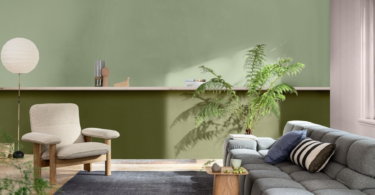Whether you’re moving into a new space or you’ve outgrown your current décor, buying new furniture is exciting. However, there should be a bit of strategy and planning involved. Read on before you get started…
Have a plan – Begin by getting a sense of current trends and styles, your budget and what type of look speaks to you. Do a little window shopping, browse online (hello, SA Home Owner!) and factor in your lifestyle – if you have children, for instance, that all-white lounge suite you’ve always dreamed of may have to wait a bit. A lot of designers advise that you buy your bigger pieces first and keep them quite neutral so you can easily decorate around them for some time to come. The last thing you want is to lock yourself into a particular style or theme. Rather add in colour and texture with smaller pieces and accessories that you can chop and change over time without breaking the bank. You can even put together a furniture ‘dream board’, detailing what you’d like each room to look like, with magazine clippings, fabric swatches, patterns and colour choices, etc.
Don’t buy everything at once – This is a common mistake, especially when you’re starting from scratch, as you could end up buying stuff that you don’t truly love just to fill the gaps. Rather spread your purchases out over time and build your look, saving for the nicer things that will last longer.
Out with the old – If you’re looking to update what you currently have, do a bit of a clear-out beforehand. Let go of the dated and damaged, unless you’re attached to it for a reason (it may have belonged to your late grandmother, for instance). In that case, look into how you can give it a fresh face. You may even be able to add to your new-furniture budget by selling your older items.
Measure up – Size matters, so start by measuring your room and the ideal size of the furniture you’re after. One of the biggest mistakes people make when shopping for furniture is misjudging the size in relation to the room and everything else that’s already in it. Remember, the space on a showroom floor is exaggerated and not nearly the same as an actual bedroom or living room. Rather take detailed measurements before you buy and take those measurements with you when you go shopping. You’ll save yourself a lot of hassle this way.
Splurge vs save – Always opt for quality over quantity. Spend more on what will be used most often and less on accessories and things that you won’t use regularly or that will date quickly. Comfort is really important when buying bedding and seating, so invest as much as you can here (and don’t be too embarrassed to climb onto the bed or sit on the couch in the store – it’s the only way to know). Also, don’t be afraid to haggle over the advertised price.
Hidden costs – Buying furniture is one thing; factoring in the cost of delivery is another. Not to mention slotting into delivery schedules. The best way to protect yourself is to make sure you can get a full refund if the store doesn’t live up to its end of the bargain on delivery. And while measuring furniture for placement inside a room is one thing, making sure you can get it through the door is another. Some furniture may even require on-site assembly, so make sure you read the fine print here.
More hints and tips:
• Stick to stores with a good track record, where furniture is their speciality and where you can trust that they’ll offer after-sales service and stand behind their products.
• Price doesn’t always dictate the quality of an item, so make sure to check it out thoroughly before committing. Watch out for squeaky and wobbly furniture. If it’s primarily assembled with nails and glue, don’t buy it. Also, if it’s upholstered, knock the centre of the sides and back with your knuckles to feel if the piece is framed in. If you feel hollow ‘nothingness’, don’t buy it.
• Look into buying used, second-hand or antique pieces. ‘Used’ doesn’t necessarily mean poor quality. You can always update or repurpose something to make it your own.
• If you’re really at a loss, consider hiring an interior designer to help you.













Leave a Comment